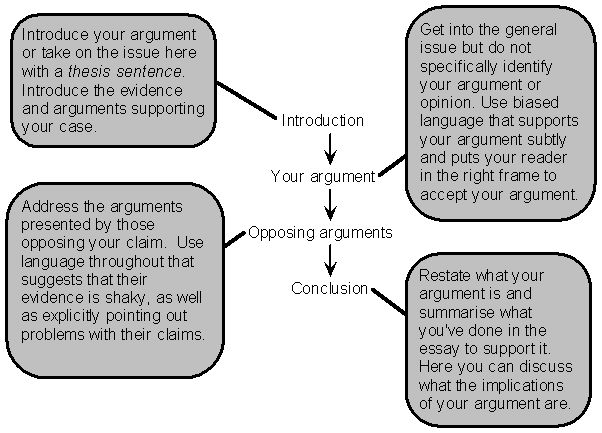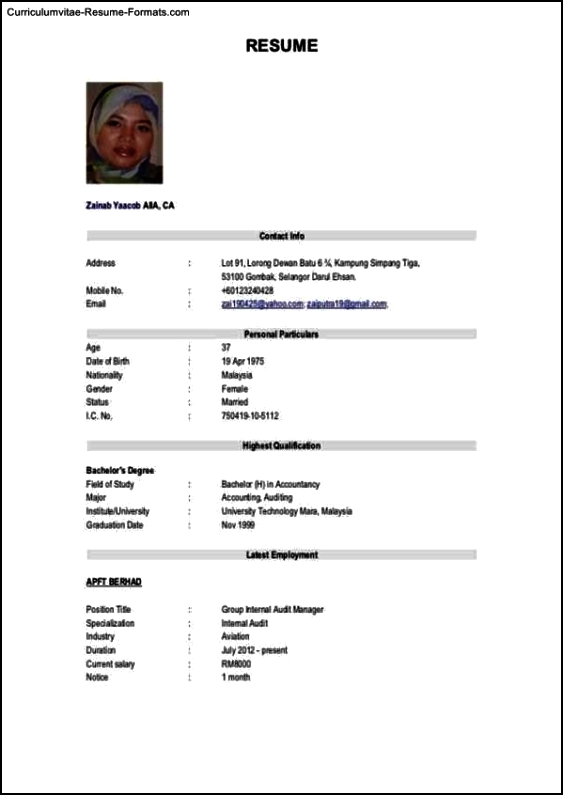
Argumentative Essay Structure. The structure of your paper's outline is the same as the structure of your entire essay. The difference is that you include the entire information in the body text while you only name the arguments in your outline. An English essay outline is worth your time as it figures as your plan during the whole writing process Chapte r 3 will offer then an insightful analysis of argumentative texts in terms of (1) definition; (2) main types of argumentation; (3) structure and (4) main textual devices within argumentative text types: (a) cohesion, regarding (i) grammatical, (ii) lexical and (iii) graphological devices, and (b) coherence Once you've given yourself a solid foundation of information, begin to craft your essay 9/4/ · – Argumentative essays are divided into 3 parts: introduction, main part and conclusion. – In the introduction we present our thesis. – In the body of the essay we present the arguments supporting our thesis. – The conclusion must be short and confirm the thesis we previously set out
Academic Writing Guide to Argumentative Essay Structure
We explain what an argumentative text is, generic structure of argumentative text, its resources, types and other characteristics. Also, its structure and examples. An argumentative text is that oral or written text in which the author pursues the transmission of a perspective around a specific topic or series of topics, that is, that aims to convince the reader to take a certain position.
Generic structure of argumentative text this, they are distinguished from the expository texts. Argumentative texts are normally considered synonyms for dissertation, essay or opinion, given that in their approach to the specific topic persuasion strategies are used That is, strategies that make the approach to the subject convincing in the eyes of the reader.
Everything always in order to give strength to their own points of view. Argumentative text types Argumentative texts can be of a very different nature, depending on their construction, their development mechanisms and their context of appearance.
Here are some possible types:. There may also be a previous thesis, which is an earlier starting point that is rescued in the text an investigation of another, an ancient text, etc. Published by Isabella View all posts by Isabella. Skip to content. by Isabella Posted on April 2, April 21, What is an argumentative text? However, to do this type of texts, use: Exhibition resources: They offer the reader relevant information. Narrative resources: They can tell stories that highlight the focal point.
Rhetorical Resources: They are formal tools to enhance or beautify the meaning of the text. These resources can be: Quotes from a book or publication; Textual references to an authority in the area; Examples and illustrations; Abstractions, generalizations, enumerations; Schemes and simulated situations; Paraphrases and reformulations; Descriptions and stories. Here are some possible types: Essays. These are texts of a literary type, in which the author freely spends or reflects on a subject of his choice, to propose, aesthetically, a point of view.
Election propaganda. Typical texts of political contests that try to convince the other through more or less rational or emotional arguments, to assume a specific political position, facing an election, militancy, etc.
Those texts related to the consumption of products, which seek to convince us to buy a specific brand or the advantages of a specific product above its competition.
Opinion texts. Appeared in the generic structure of argumentative text editorials or opinion piecesthey tend to promote a certain social, political or intellectual perspective among readers of a newspaper or viewers of a television program. Legal texts. Many generic structure of argumentative text texts defend a type of interpretation of the laws written in codes or in the Constitution, by means of arguments and deductions and references to past cases.
This is what lawyers do in trials. Characteristics of an argumentative text The argumentative texts are characterized by: Have a persuasive intention that is, wanting to convince the reader of something. Using arguments to convince, that they are reasoned propositions through the gradual and careful exposition of information, accompanied by their desired interpretation. Organize your content in the most convenient way for the intended purpose. Get hold of strategies typical of other types of text expository, narrative.
You can use different types of arguments : logical, emotional or affective. Structure of an argumentative text An argumentative text generally consists of three fundamental parts: Introduction or approachwhich is the starting point or approach of an initial situation, from which the problem to be addressed in the text should emerge.
Conclusion or synthesisgeneric structure of argumentative text, final stage to which the arguments lead and that summarizes the point of view on the subject of the author of the text. Published by Isabella. Prev Scientific Text — Concept, types, structure and characteristics.
Next Expository Text — Concept, types, structure and characteristics.
LANGUAGE FEATURES OF AN ARGUMENTATIVE TEXT
, time: 8:20Generic Structure of English Texts ~ Genre Text in English

4/2/ · Structure of an argumentative text An argumentative text generally consists of three fundamental parts: Introduction or approach, which is the starting point or approach of an initial situation, from which the problem to be addressed in the text should emerge. Also known as “premises” or “data.” 11/10/ · According to classical guidelines, argumentative texts will develop then positive and negative arguments (pros and cons) following six main steps: introduction, issue explanation, outline of the argument, proof, refutation and conclusion 1. 1 9/4/ · – Argumentative essays are divided into 3 parts: introduction, main part and conclusion. – In the introduction we present our thesis. – In the body of the essay we present the arguments supporting our thesis. – The conclusion must be short and confirm the thesis we previously set out

No comments:
Post a Comment